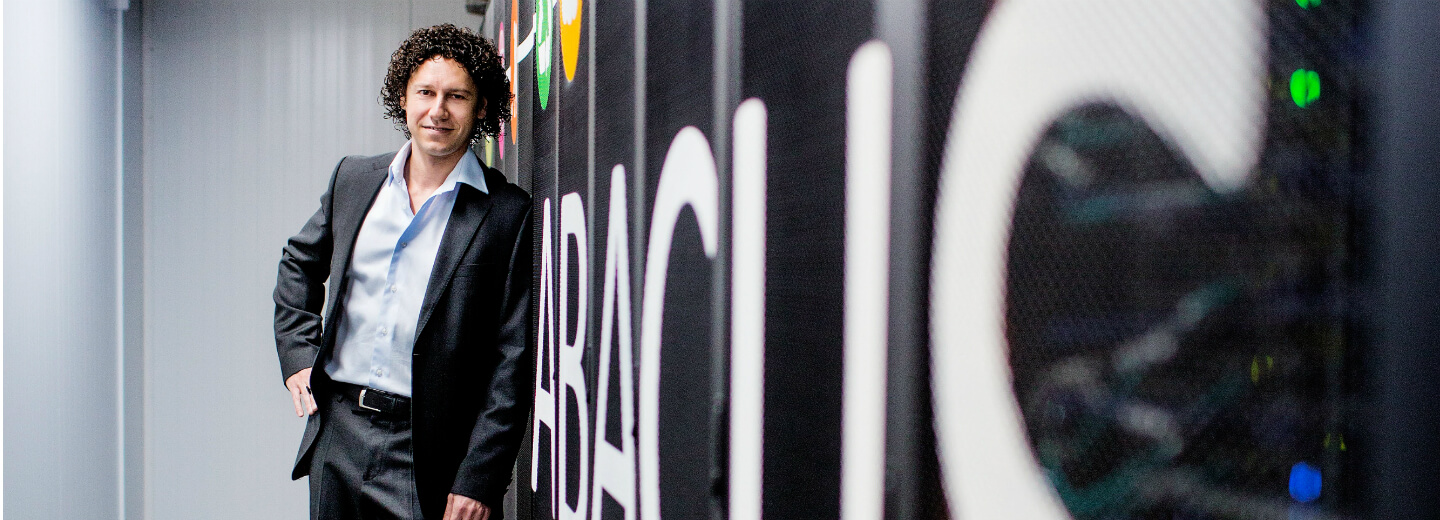
SDU eScience Centre opens on 7 June 2017
Claudio Pica, Professor WSR, will be Head of the SDU eScience Centre, which will be an important partner for SDU's researchers. The centre will be interdisciplinary but anchored at the Faculty of Science. All are welcome at the opening on 7 June at 11 a.m. in the SDU Cortex Lab.
By Trine Søndergaard, trinesh@sdu.dk
The SDU eScience Centre will have three primary work areas: Firstly, it will be system owner of the National HPC Centre, which houses the supercomputer ABACUS 2.0; secondly, it will be a centre for storing data from SDU's researchers; and finally the SDU eScience Centre will offer cloud services.
Cloud services are about making super computing more accessible and making research data searchable and shareable among researchers and collaboration partners. The SDU eScience Centre will also build up a data library with a catalogue that makes it easy to find/retrieve specific data. In this way, the SDU eScience Centre will become an important partner for SDU's researchers.
In addition, the centre will also approach companies who are seeking HPC and research assistance.
Head of Centre from CP3-Origins
Claudio Pica, Professor WSR, will be Head of the SDU eScience Centre. He is a familiar face for most of the staff at the Faculty of Science where he has been attached to the Department of Mathematics and Computer Science and CP3-Origins since 2010. Claudio Pica studied physics at Scuola Normale Superiore at Pisa University and researched in the USA and Edinburgh before an exciting offer from SDU lured him to Odense. Here at SDU, Claudio Pica has helped build up CP3-Origins, which today has eight members of staff.
Experienced people and new appointments
Claudio Pica is a trained user of HPC and eScience, which he uses in his own research. In Pica's research group, which is investigating the Higgs particle, ABACUS 2.0 is used as a laboratory. Via computer simulations, the researchers are attempting to get closer to the Higgs particle's components.
As well as being occupied with the microscopic elements of particles, Claudio Pica is currently working on the vision and strategy for SDU eScience Centre. The first two members of staff have just been employed, and with the title of eScience Developers they will use their experience as programmers to develop the systems for storing data and the services surrounding cloud infrastructure.
Wendy Alexandra Engelberts, who has been HPC Coordinator, will become Head of Business Development and be responsible for the daily running of the centre.
More positions will be advertised over the coming months.
Visions for the centre
Claudio Pica has several visions for the centre. He predicts that a field such as personal medicine could become a core area, for instance in collaboration with the Odense University Hospital. Personal medicine is a form of treatment that can be adapted to the individual patient, for instance by using genetic information.
Claudio Pica can also see that the centre can play a significant role in developing a platform for data management both for SDU and internationally. Data management, which makes data shareable and accessible for other researchers, has attracted considerable attention in recent years, including from ministerial teams.
Claudio Pica is looking forward to the official opening on 7 June. Until then, he will be busy with getting everything from projects to people and visions ready for the new Centre.
All are welcome to attend the opening on 7 June at 11 a.m. in the SDU Cortex Lab, which is located in Videnbyen (Cortex Park 26, facing Niels Bohrs Allé). Mark the date in your calendar!
A little about eScience
The eScience research method is concerned with gathering, handling, using and storing scientific information in data form. It provides new opportunities for research in many academic fields. eScience has previously been widespread in the scientific disciplines, such as physics, chemistry and bioinformatics and also in disciplines in engineering. The use of eScience within other academic disciplines has risen sharply in recent years, which means that new research results can be achieved.
Header image: Claudio Pica standing next to the ABACUS 2.0 (Nils Lund/SDU).